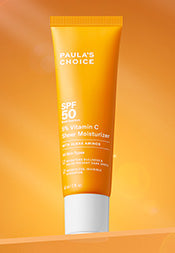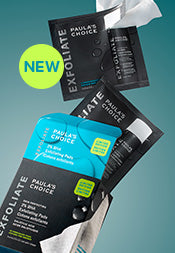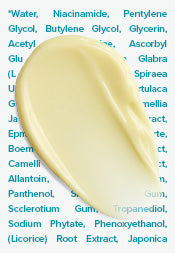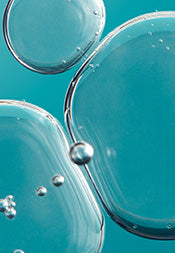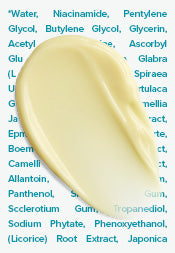Everything You Need to Know About Azelaic Acid for Skin
Azelaic acid was once one of the best-kept secrets in skin care, only known in medical and professional fields. The demand for this ingredient soared, thanks to undeniable research demonstrating how it significantly diminishes the appearance of skin blemishes, helps fade post-acne marks + other discolourations, refines skin’s surface, and even reduces skin sensitivity. In short, azelaic acid is an ingredient you need to know about.
What is Azelaic Acid?
Azelaic acid is a skin-friendly dicarboxylic acid with unique properties that deliver:
- Mild exfoliating action that helps unclog pores and refine skin's surface
- Skin tone evening properties to visibly fade post-acne marks and other discolourations
- Significant skin-calming factors that reduce sensitivity and bumps
- Antioxidant power that contributes to healthier-looking skin
You can extract azelaic acid from grains like barley, wheat, and rye. However, the lab-engineered form is typically used in skin care formulas because of its greater stability and effectiveness.
Some research about azelaic acid has looked at prescription-only topical products with concentrations between 15% and 20%, but there are incredible benefits to be seen even at lower concentrations.
What does Azelaic Acid do for Skin?
Azelaic acid works by inhibiting erratic elements on and within the skin's uppermost layers. Left unchecked, these troublemakers can produce visible skin imperfections (like brown patches and post-blemish marks), dull skin tone, and signs of sensitivities. Essentially, azelaic acid can zero in to inhibit what's causing the skin to act up. Skin "hears" the message azelaic acid sends and responds favourably, which leads to skin that looks better, no matter your age, skin type, or concerns.
The research on the unique way azelaic acid improves skin led us to formulate our 10% Azelaic Acid Booster. The azelaic acid within the product targets a wide range of skin imperfections and is formulated with 0.5% salicylic acid for a bit of a pore-refining nudge. The 10% azelaic acid booster also contains a soothing complex of brightening plant extracts plus skin-restoring adenosine, an energising ingredient that visibly reduces signs of ageing.
How to Use Azelaic Acid
Azelaic acid products “play” well with others, meaning you can layer it into your routine without worry that the azelaic acid will overpower or deactivate other ingredients. But check the product you’re using. If it’s an over-the-counter product, apply once or twice daily. If it’s prescription strength, follow the advice of your physician.
If you’re using our 10% azelaic acid booster, we recommend applying it after your normal cleansing, toning, and exfoliating routine. This oil-free cream formula can be applied on its own or mixed with your favourite serum or non-SPF moisturizer. It's fine to apply it to the entire face, or you can target blemished areas as needed. During the day, finish with a broad-spectrum sunscreen rated SPF 30 or greater.
Who Should Use Azelaic Acid and Who Should Not?
Azelaic acid is a safe skincare ingredient that has widespread compatibility with all skin types, and is typically well-tolerated, even by those with sensitive skin.
Who Could Benefit from Azelaic Acid?
Azelaic acid is particularly beneficial for those with blemished skin and/or those with uneven tone and bumpy texture. It can also be used to calm sensitivity. For help in reducing your acne marks, azelaic acid is your best bet.
Who Should Stay Away from Azelaic Acid?
Adverse reactions and side effects to azelaic acid are not common, but as with any skincare ingredient, if you experience signs of irritation, stop the use or experiment with applying less often (once every other day, for example).
AHA, BHA, and azelaic acid share similarities, but also some interesting differences. Although azelaic acid can exfoliate skin when properly formulated, it doesn’t exfoliate the same way or with the same level of effectiveness as ingredients like glycolic acid, lactic acid (AHAs) or salicylic acid (BHA).
On the other hand, azelaic acid offers additional benefits that AHA and BHA ingredients don’t provide, especially when it comes to improving a markedly uneven skin tone and skin sensitivity issues.
Can you use them together? Yes, in fact, this combination can be ideal for addressing the look of multiple skin concerns, from bumps to uneven skin tone to age-related concerns you may be struggling with.
Can I Use Vitamin C and Azelaic Acid Together?
Yes, you can use vitamin C and azelaic acid products together—these ingredients complement one another. Using them together may speed up the results for evening skin tone and fading marks by targeting the issue via multiple pathways.
What Should You Not Mix with Azelaic Acid?
Azelaic acid products can be used alongside all kinds of skin care products. Research data do not advise against using azelaic acid together with other powerhouse ingredients. Of course, if you’re using a prescription version, consult with your physician on how to work it into your skincare routine.
Learn more about skincare ingredients.
References for this information:
Pharmaceutics, April 2021, page 567
Indian Dermatology Online Journal, November-December 2017, pages 406–442
The Journal of Clinical and Aesthetic Dermatology, March 2017, pages 37–40
Journal of Cosmetic Dermatology, March 2017, pages 35–42
Advanced Biomedical Research, February 2017, ePublication
Biomedicine & Pharmacotherapy, October 2016, pages 771–775
Journal of Cosmetic Dermatology, September 2016, Issue 3, pages 269–282
Skin Therapy Letter, January 2016, Issue 1, pages 1–7
Journal of Drugs in Dermatology, September 2015, pages 964-968
Skin Pharmacology and Physiology, Volume 27, Supplement 1, 2014, pages 9–17
Journal of Medical Sciences, Volume 14, Issue 2, 2014, pages 87–91
Cochrane Database of Systemic Reviews, Issue 11, 2014, pages 1–17
Drug Development and Industrial Pharmacy, August 2012, pages 985–994
Experimental Dermatology, September 2010, pages 813–820


